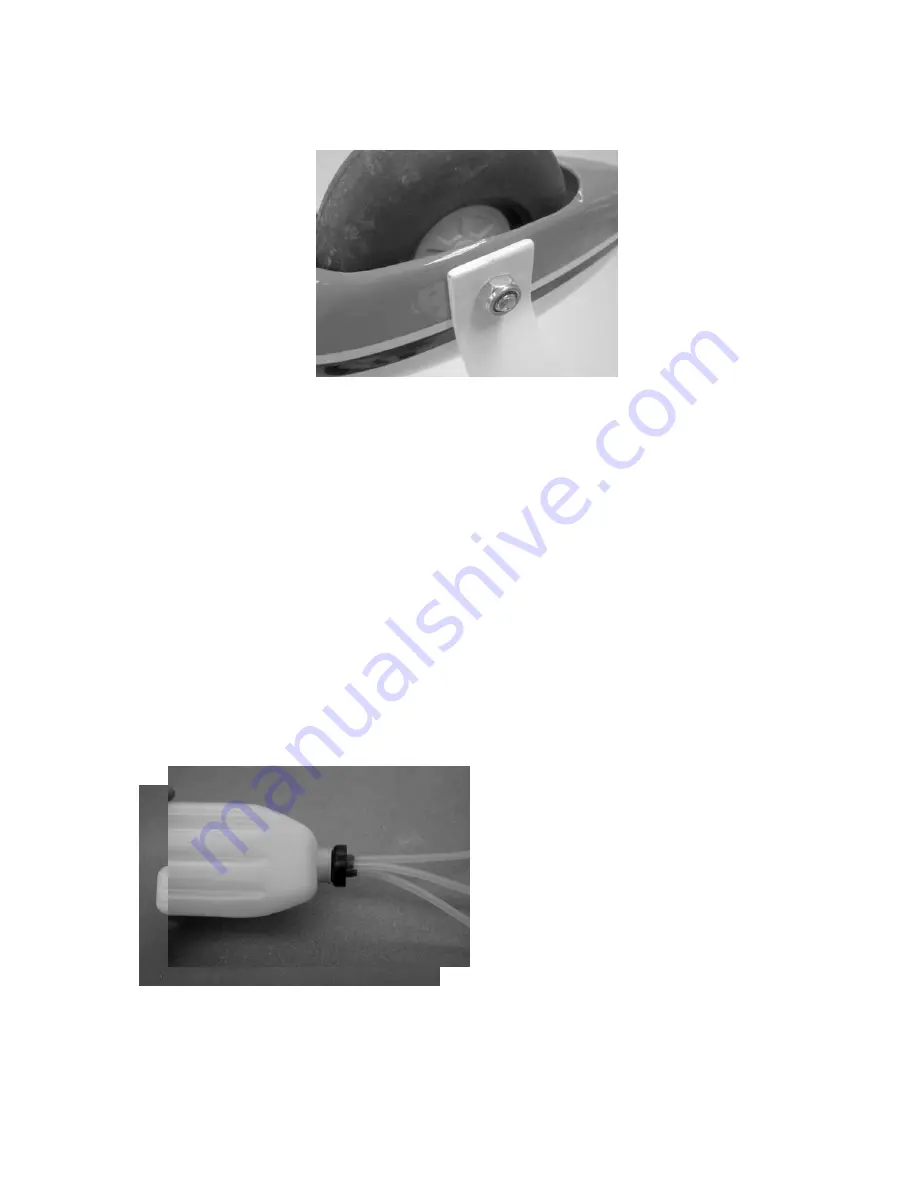
GRAUPNER GmbH & Co. KG D-73230 KIRCHHEIM/TECK GERMANY
We reserve the right to introduce modifications. Not liable for printing errors!
12/2011
13
After the glue has set, the axles together with the wheels and collets are installed and
fastened to the undercarriage components.
Align the covers so that they are fastened parallel to the ground.
Installing the tank and motor
Assembling and installing the fuel tank
Slip a piece of plastic tubing onto the fuel tank clunk pick-up. Push the free end of the
fuel tubing onto one of the tubes in the fuel tank stopper so that the pick-up will be able
to move freely inside the tank later on without binding or jamming when the stopper is
in place. Use a heat-gun or lighter to gently heat the free plastic tubes so that they can
be bent easily. One tube should face down and will be used later to fill the tank; the
other one points upward and serves later as the overflow when the tank is filled. Use a
piece of tubing to extend the two tubes so that they reach to the top and bottom of the
tank.
Now push the tank stopper over the throat of the fuel tank, and tighten the Philips-head
screw to fasten the stopper in place. It is important to tighten the screw so that the tank
is completely sealed. This can be checked by holding the tank under water. Hold it
under water and blow air into it. If the tank is sealed, there will be no air bubbles.
To each stub tube projecting from the
fuel tank, a length of fuel tubing is
connected.
Mark the tubes with a felt marker to show
which runs to the motor, the overflow,
and the filler.
The tube from the clunk is then
connected to the carburettor, while the
overflow is run downward. The fuel filler tube can later be routed out through a drill
hole in the engine bonnet. After filling, it should be sealed with a plug.










































